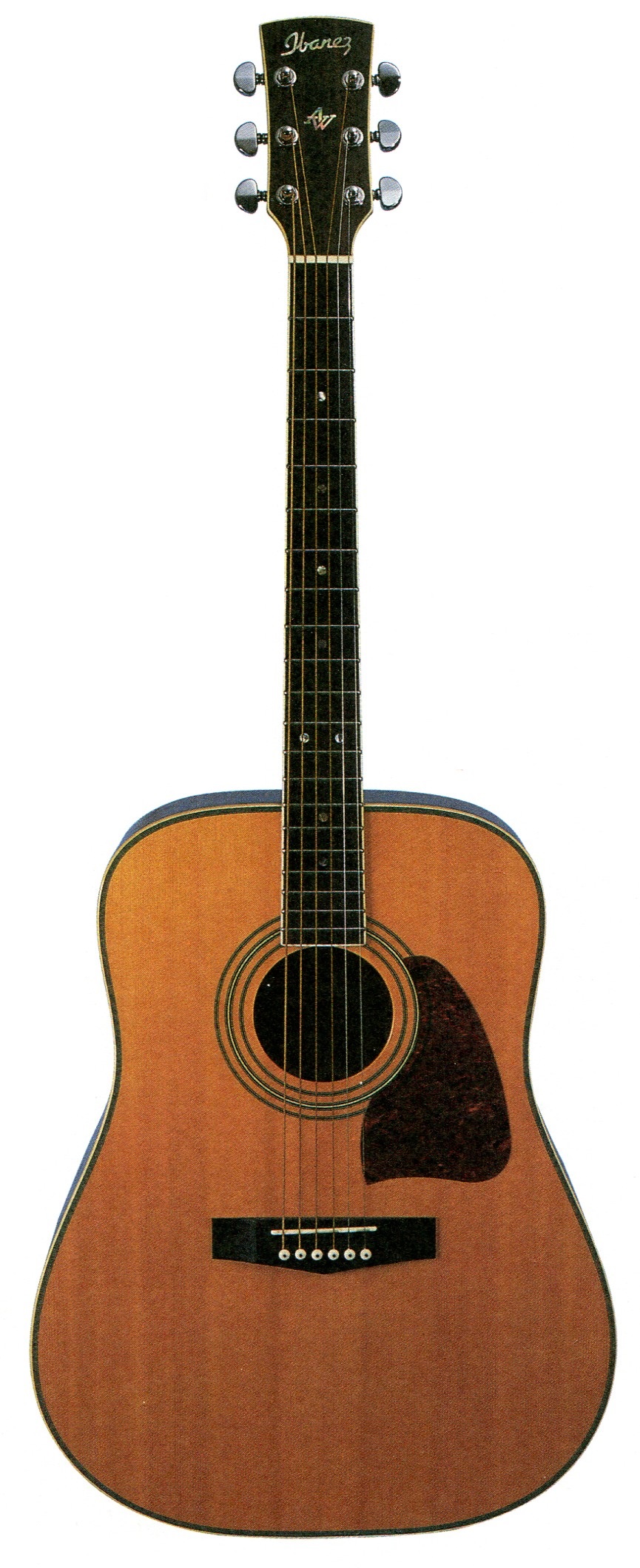Ibanez Artwood

In the late 1990s, the Artwood model helped re-established Ibanez, whose reputation at that time rested primarily on electrics, as a maker of high-quality flat-top guitars.
The Ibanez name was already well-known in the US as well as in Japan. The first Ibanez instruments were made by the Hoshino Gakki Ten company in Matsumoto, Japan, in the 1930s. Philadelphia music store owner Harry Rosenbloom, founder of the Elger brand, began importing them in the 1960s. Unlike many other Japanese-made guitars, Ibanezes were inspected at an Elger facility before being distributed to dealers, and as a result, they immediately gained a reputation for better quality than their competition.
Ibanez’s most successful models were copies of popular American guitars, electric as well as acoustic, but following Gibson’s lawsuit against Elger in 1977, Ibanez began introducing more original designs. The original Artwoods featured solid spruce or cedar tops and bodies of such elite woods as quilted maple, flamed maple, bubinga and walnut. They spawned over 20 different Artwood models, identifiable today by “AW” on the peghead and in the model name.
